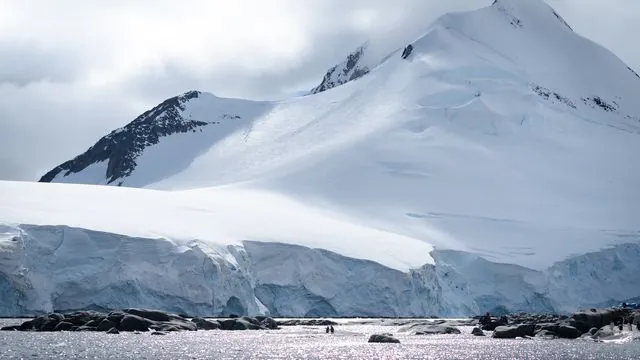
Major Breakthrough: New Data from Antarctic Sea Probe Unveils Alarming Trends in Ice Melting
2024-11-11
Author: Siti
Major Breakthrough: New Data from Antarctic Sea Probe Unveils Alarming Trends in Ice Melting
In an unprecedented turn of events, a research mission in Antarctica has shed light on the alarming increase of melting affecting one of the continent's most significant ice shelves. Scientists from the University of East Anglia (UEA) discovered that ocean warming has dramatically impacted the Ross Ice Shelf over the last four decades, marking a significant finding for climate science.
The autonomous underwater vehicle, known as Marlin, was initially deployed in December 2022 to collect crucial data on ocean processes in the Ross Sea. However, an unexpected snag occurred when it became trapped beneath the ice shelf. This unfortunate entrapment allowed researchers to collect valuable information, as Marlin’s sensors remained active, measuring water properties within the cavity for four days.
During its unintended stay below the ice, Marlin conducted 79 dives, taking measurements up to 200 meters deep. Researchers uncovered a notable intrusion of warm water—specifically, a 50-meter-thick layer—seeping into the cavity from the open ocean, with temperatures ranging between -1.9°C and -1.7°C. This discovery is crucial as it reveals that the previously misunderstood warm water is significantly contributing to the melting of the ice shelf.
Dr. Peter Sheehan, the lead author of the study, explained, "While the temperature increase of merely four thousandths of a degree a year might not seem dramatic in isolation, it translates into an estimated additional ice loss of 20 to 80 cm annually over the past 45 years." He emphasized the importance of this warm water intrusion, suggesting it poses a direct threat to the stability of the ice shelf.
Climate change remains a key villain in this narrative. As ocean temperatures rise, the mechanisms that facilitate warm water flow under the ice shelf, particularly through wind-driven currents known as Ekman currents, are also expected to intensify. These currents allow heat from the surface waters to rapidly reach the ice, causing accelerated melting—something that scientists deem a growing concern for the stability of Antarctic ice masses.
Prof. Karen Heywood, co-author of the study, cautioned, “Given the ongoing warming of the Ross Sea, it seems reasonable to anticipate that both the warmth of the water intrusions and the melting they induce will continue to escalate. Such dynamics must be integrated into climate models to better understand their long-term effects.”
What makes these findings particularly striking is that they unveil a process that has never before been observed in real-time over such an extensive period. Prior understandings of warm water intrusions relied mostly on sporadic data collected from ships or ice moorings, leaving large gaps in knowledge about how these processes function.
The implications of this research extend beyond Antarctica. The melting of ice shelves does not directly cause sea levels to rise, but it greatly influences the flow of land ice into the ocean, potentially accelerating global sea-level rise. As scientists continue to piece together the impacts of climate change on these vulnerable ecosystems, understanding the dynamics of warm water intrusions will become imperative for future climate predictions.
This groundbreaking research not only highlights a chilling trend but also serves as a clarion call for immediate action to mitigate climate change. As the planet grapples with our changing environment, data such as this underscores the urgency to prioritize the health of our polar regions and, by extension, the future of our global climate.
 Brasil (PT)
Brasil (PT)
 Canada (EN)
Canada (EN)
 Chile (ES)
Chile (ES)
 Česko (CS)
Česko (CS)
 대한민국 (KO)
대한민국 (KO)
 España (ES)
España (ES)
 France (FR)
France (FR)
 Hong Kong (EN)
Hong Kong (EN)
 Italia (IT)
Italia (IT)
 日本 (JA)
日本 (JA)
 Magyarország (HU)
Magyarország (HU)
 Norge (NO)
Norge (NO)
 Polska (PL)
Polska (PL)
 Schweiz (DE)
Schweiz (DE)
 Singapore (EN)
Singapore (EN)
 Sverige (SV)
Sverige (SV)
 Suomi (FI)
Suomi (FI)
 Türkiye (TR)
Türkiye (TR)
 الإمارات العربية المتحدة (AR)
الإمارات العربية المتحدة (AR)